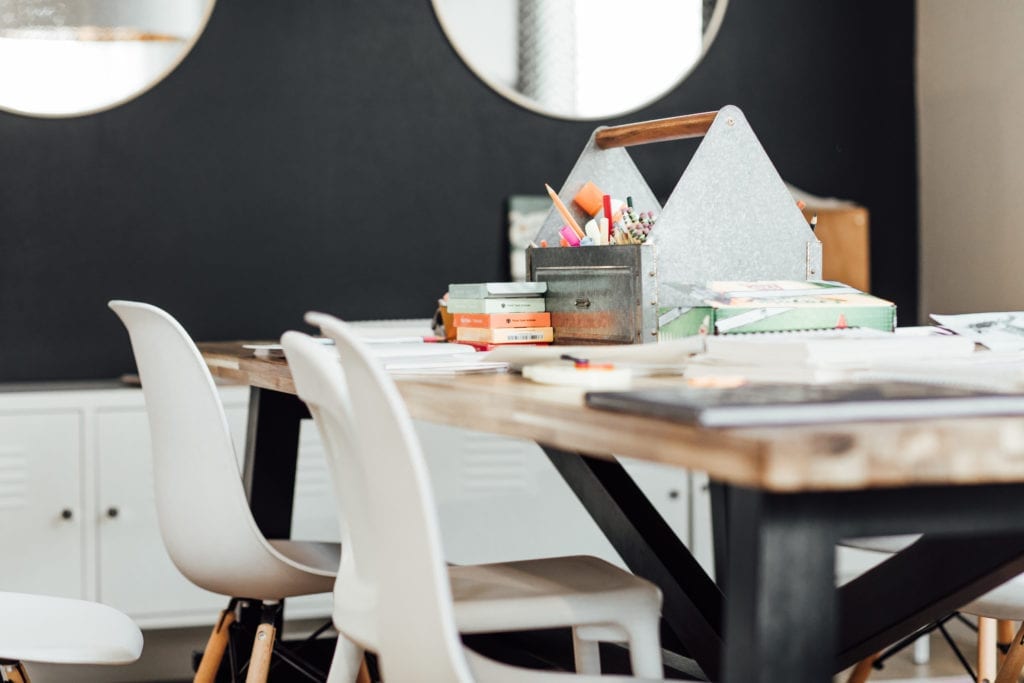

I want to start this post out with some good news for all the homeschooling mamas out there…
You can give your kid a high-quality education without devoting your entire life, house, and day to it. It’s true!
Homeschooling can easily mean having so much stuff that it takes over your house. We want to give our kids a solid education with as many books as necessary. We don’t want them to miss out on an opportunity for learning just because we aren’t as full of resources as an actual school.
We’re told by homeschool conventions and curriculum programs and mommy bloggers that we need to try something new every year, and so we do, and we hold onto the old stuff too. It adds up, piles high, and pretty soon we’re telling ourselves this is just the way it is when you homeschool- cluttered. And it’s worth the sacrifice. But is it?
Laura Ingalls, amazing American writer, had just one piece of chalk and a slate board which she shared with her sister to learn with. Abraham Lincoln read Aesop’s Fables over and over again because it was the only book he had. He did math by writing out sums on a shovel with a piece of coal. What the….
My point is, you don’t need a ton of STUFF to homeschool. Get down to the basics and set yourself free!
Homeschooling does not have to mean a cluttered space, and I don’t think it should. What takes up your space takes up your time, so it’s important to be ruthless and intentional about what we allow to take up space in our homes, even when it comes to home education tools and resources. If you’re a homeschooler, your home is not only the place you and your family do life, make memories, and form childhoods, it’s the place your kids sit and learn all there is to know about the earth, numbers, letters, the written word, everything you’re teaching them! This space is important, and deserves to be clear of chaos.
According to studies, clutter is directly link to high cortisol (the stress hormone) in women. You will parent and homeschool better if you clear out all the things and just focus on what you actually need.
If right now you’re wondering how homeschooling would even look without shelves and bins and garaged boxes full of curriculum and school supplies, if you’re wondering how minimalism can have any place in homeschooling, I’m going to show you.
How to Bring Minimalism into Your Homeschool
- Let go of old books and curriculum.
Yes I know, it hurts. You spent good money on that curriculum, and you could use it for your second-born who will be in the same grade next year. That’s fine! But will you? If you’re actually going to reuse something, it’s in your definite plans to do so, and it’s for sure going to save you tons of money, hold onto it. But so much of the time I see moms holding onto curriculum because it cost a lot of money and they might reuse it (which I can tell means they probably won’t but are having a hard time just throwing it away).
Listen to me, that curriculum served you well. You bought it to teach your child a year’s worth of something valuable, it served its purpose, you can let it go and use something else for the next kid without feeling guilty. It’s okay to let go of what’s old news and not working for you anymore. Learning what’s better and using what’s better as you go is a big part of homeschooling; you’re not being wasteful, you’re using your newfound wisdom on what might work better for you next year. The same goes for books. I love books, and I love the look of a stocked bookshelf more than anyone- it’s so cozy! But when the books have taken over and you know you need to let go, do it. Don’t hold onto a book because someone “might want to read it later”.
You’re allowing clutter to cause you stress based on the fear that you may get rid of something you need later, and that’s a fear-based decision right there. Don’t give anxiety that power over you and your home! These books aren’t something you’re using now, they’re played their role in your homeschool and nobody’s picked them up in months. Let it go, mama.
If you feel like you truly may need something at another point in your homeschool, like a really useful piece of curriculum that would be perfect for your first grader once she’s in second grade, then have a place in your garage or attic where you store things like that, but be ruthless. Don’t just start piling things in there. You need to have a dedicated shelf or box or something that’s containing the amount of things you’re keeping. Having a set limit will help you get real with yourself and not just say “keep!” to everything.
- Clear out all the drawers and bins and bags of school supplies.
It’s all too much! It’s crowding your home, your school, and your brain. Mama listen, you only need to keep what you need! Minimalism in homeschooling is just like minimalism in any other area – it’s simple. Do you need eighty-nine pencils? Probably not. Narrow it down to a dozen and call it a day. Do you truly need an entire drawer-full of markers? Surely, no. My kids are all artists who create stacks of art on a daily basis, and they do so happily with a normal amount of supplies that aren’t taking over the whole house.
It’s okay to minimize things that are doing your family good; they will continue to do them good. Go through the erasers, crayons, pens, pencils, notebooks, etc. and get real. What do you truly need and use right now? Let go of some of that clutter.
- Rethink having a separate curriculum for every child.
If you’ve got kids really spaced out in age or if you’re dealing with special needs, disregard this point. Everyone else, if you can at all simplify your life and your daily rhythm, why aren’t you doing it? A less stressed mama is a happy home! I try to squish my kids together in schooling whenever I can. It saves me time (and space in my home) to teach them all the same thing as often as I can.
For example, if Bella (my oldest, second grade) is learning about the Civil War, I’ll let Leland (five, kinder) and Hudson (four, pre-k) listen in too. I answer all their questions, allow Hudson to color or build Legos while he listens if he’s losing interest (after all this isn’t even for his age group), but we do it together.
It challenges the younger kids, saves me from loads of curriculum for each age, and it’s a big benefit for me of having kids close in age. When I planned and purchased all the pieces of curriculum for our year, I bought everyone their level of math, reading/writing, but everyone works together with Bible, history, art, reading aloud, and anything else that works with everyone.
- Stop buying homeschool things just because they’re on sale.
This is a big one for all of us because homeschooling is so expensive! But remember to ask yourself, “do we truly NEED this in our homeschool?” Bringing home extra workbooks, reading material, and supplies just because you got a killer deal is only adding to your chaos and clutter and stress levels (remember the high cortisol connection). Just say no! Keep it simple.
- Simplify your schedule.
If your homeschool routine is working well for you right now, awesome. But if you feel like you’re constantly behind, never actually accomplish what you set out to do when each day starts, and feel like home education is quickly becoming a burden more than a pleasure, hold up. There is so often a lot we tell ourselves we need to do daily or weekly, when it could totally be bi-weekly, monthly, or just every once in awhile.
Look at your homeschool schedule and see where you can create more margin. You’re homeschooling, and that means loads of flexibility and making this whole thing work for you and your family. If it’s not working, tweak something. Can you stop telling yourself that your seven-year-old NEEDS to do art lessons every week and take it down to once a month? Can you focus more on math and reading right now and limit history to once a week?
Sometimes just by creating a little breathing room, we find our new rhythm and our best selves, and can do so much more good for our families. You’re not a failure if you can’t do everything for everyone all the time perfectly, you’re just a human mama doing her best. But you can’t if you don’t give yourself a little grace and permission to rearrange and try again.
One benefit you’ll find in simplifying your homeschool is that, just like when you declutter your house, everything gets lighter. You can easily take a day (or way more than that) off because you’ve simplified your school and your days are focused.
You’ll get a lot more done and the pressure to stay on task every week no matter what’s going on in your family is less intense. We can pick up our day’s work and head to the park or the lake without carrying bags of junk. We could do school in the car, a trailer, outside, wherever we want or need to because it’s simple and light. That’s a great feeling!
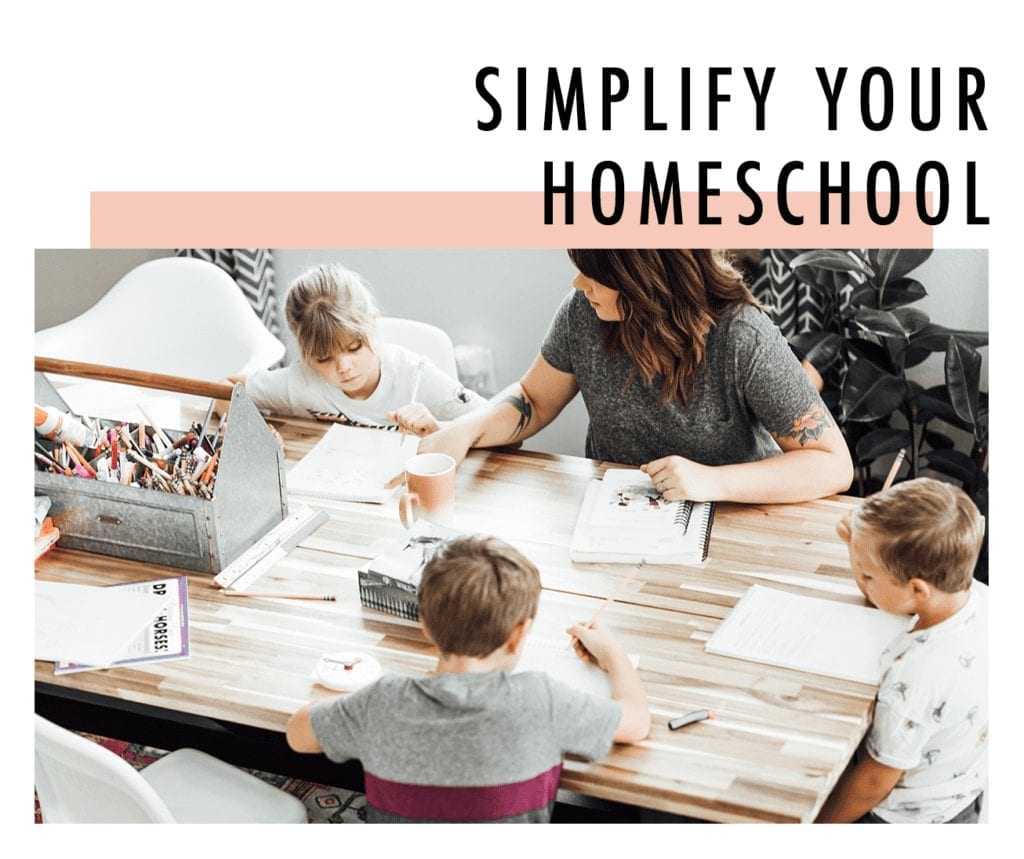






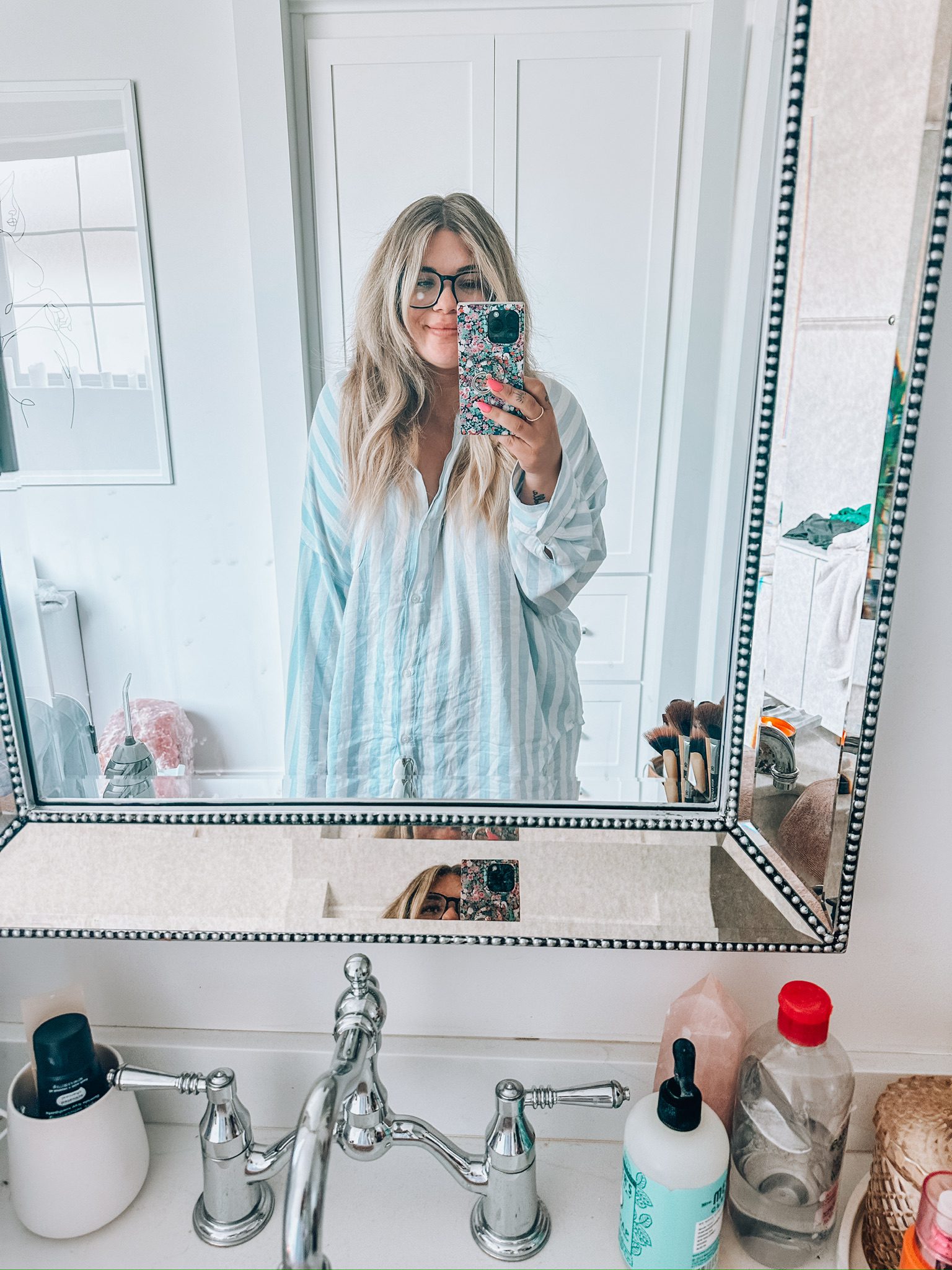

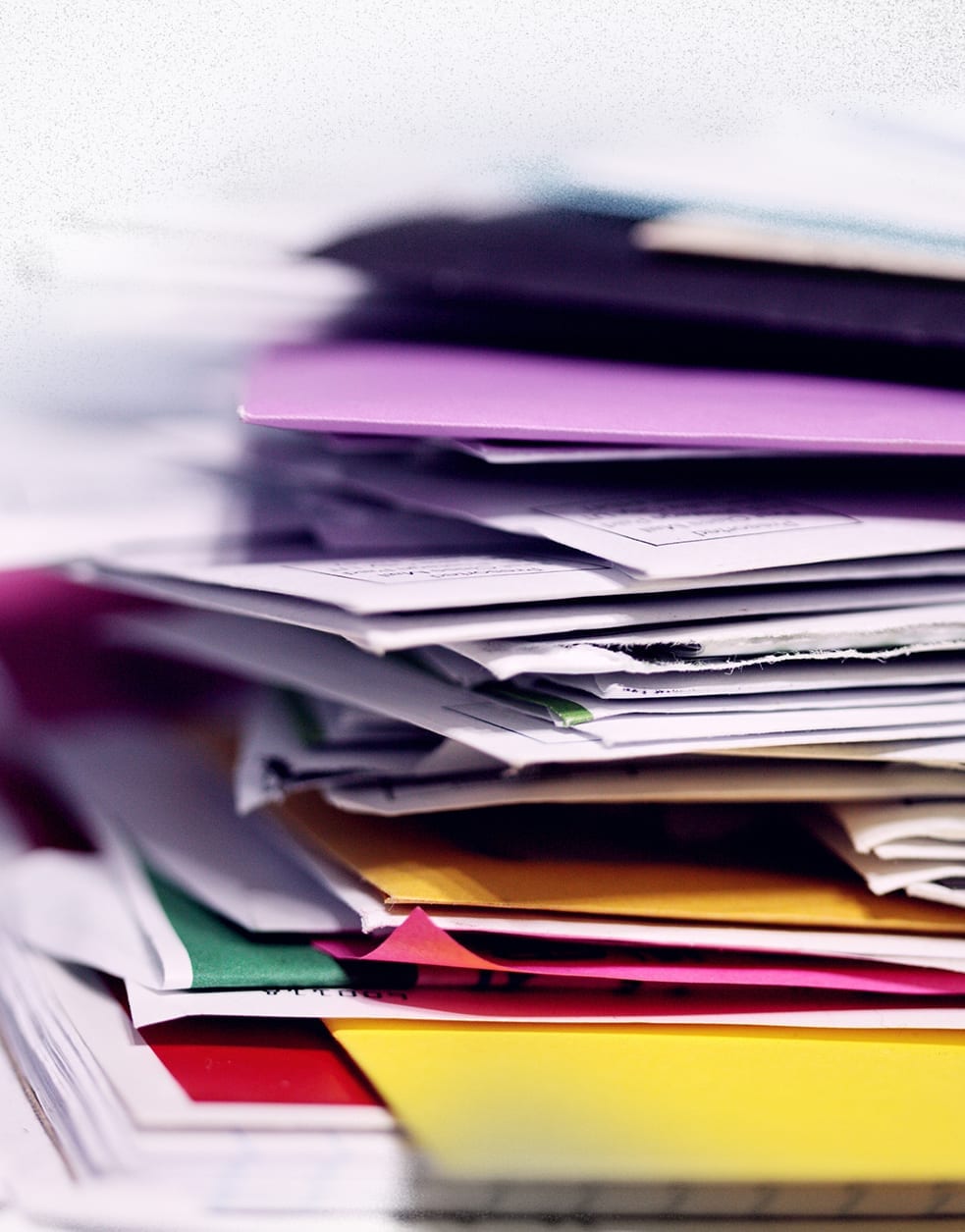
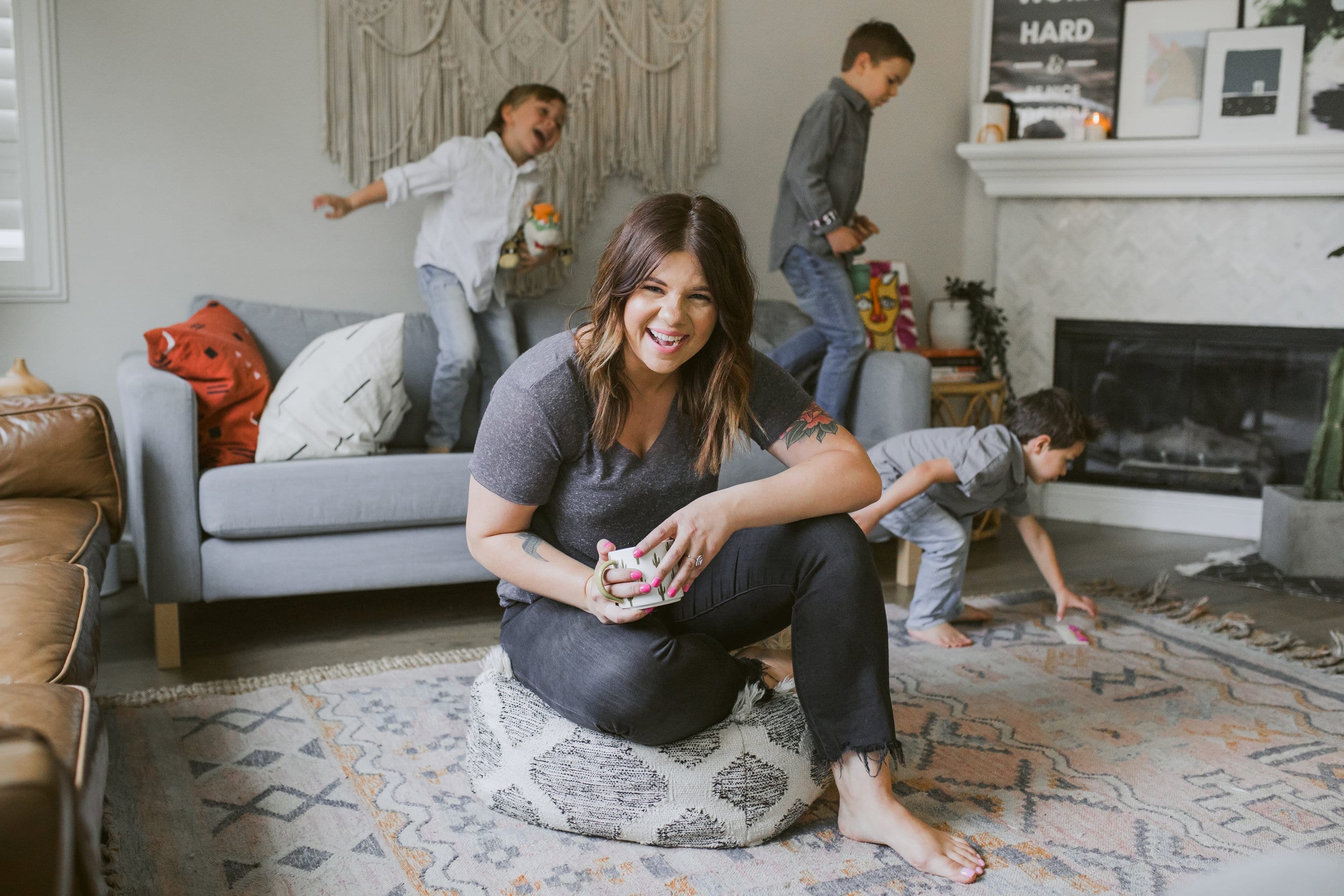

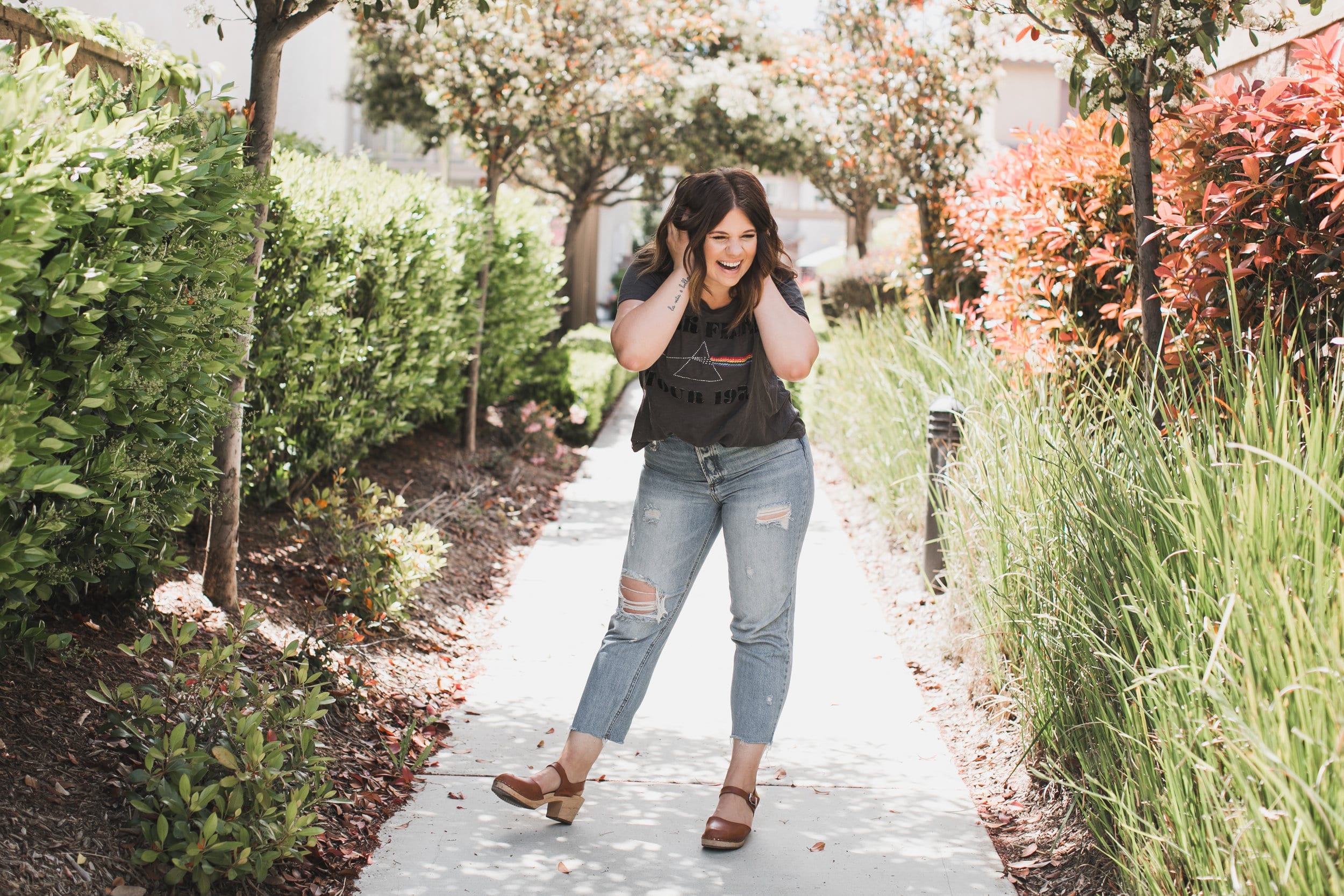
+ show Comments
- Hide Comments
add a comment